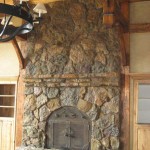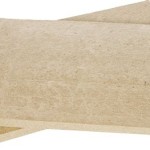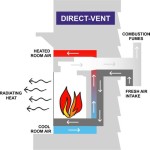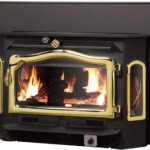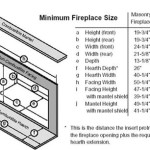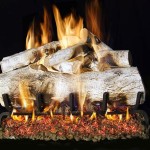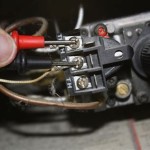Replacing Prefab Fireplace Doors: A Comprehensive Guide
Prefabricated fireplaces, commonly known as prefab fireplaces, are factory-built units designed for relatively straightforward installation in a variety of residential settings. A key component of these fireplaces is the door system, which serves aesthetic and functional purposes. Over time, these doors can become damaged, outdated, or inefficient. Replacing prefab fireplace doors can significantly enhance the fireplace's appearance, improve its safety, and optimize its heating efficiency. This article provides a detailed guide to understanding the nuances of replacing prefab fireplace doors, covering essential considerations, the replacement process, and important safety measures.
Identifying the Need for Replacement
Several factors can indicate the need to replace prefab fireplace doors. Visible damage, such as cracked glass, warped frames, or broken hinges, clearly warrants replacement. Beyond the aesthetic impact, damaged doors can compromise safety by allowing sparks or embers to escape. Inefficient doors can contribute to heat loss up the chimney when the fireplace is not in use, increasing energy costs. Outdated styles can also detract from the overall aesthetic of the room, making replacement a desirable upgrade. Rust and corrosion are common issues, particularly in humid environments, and can weaken the structural integrity of the doors and their functionality.
Difficulty in opening or closing the doors smoothly is another indication of a problem. Sticking hinges, misalignment, or warping can make the doors difficult to operate, increasing the risk of accidents or further damage. Similarly, gaps between the doors and the fireplace opening can allow drafts, reducing the fireplace's heating efficiency and potentially creating a fire hazard. Addressing these issues promptly by replacing the prefab fireplace doors is crucial for maintaining a safe and efficient fireplace.
Beyond functionality and aesthetics, the age of the fireplace doors should also be considered. Older door models may lack modern safety features or energy-efficient designs. Upgrading to a newer model can significantly improve the fireplace's performance and safety. If the existing doors are no longer readily available from the manufacturer, replacement with a compatible aftermarket option may be the most practical solution. Furthermore, homeowners seeking to update the style of their fireplace to match a new interior design may choose to replace the doors for purely aesthetic reasons.
Key Considerations Before Replacement
Before embarking on the replacement process, several key considerations must be addressed to ensure a successful outcome. The most crucial step is accurately measuring the existing fireplace opening. This measurement will determine the correct size of the replacement doors. Measure the width and height of the firebox opening precisely, taking multiple measurements to account for any irregularities. Inaccurate measurements can result in doors that do not fit properly, compromising both aesthetics and functionality.
Identifying the manufacturer and model number of the existing fireplace is also essential. This information can often be found on a label or plate attached to the firebox. Knowing the manufacturer and model number will help in finding compatible replacement doors, ensuring a proper fit and optimal performance. Some manufacturers offer direct replacements for their original doors, while others may require aftermarket options. Consulting with a fireplace professional or supplier can help determine the best replacement option based on the fireplace's specific characteristics.
Selecting the appropriate type of replacement doors is another important consideration. Prefab fireplace doors are available in various styles, materials, and finishes. Options include bi-fold doors, track doors, and hinged doors. Materials commonly used include steel, wrought iron, and aluminum. Finishes can range from traditional black to modern brushed nickel or brass. The choice of door type, material, and finish should be based on personal preferences, the overall aesthetic of the room, and the functional requirements of the fireplace. Consider factors such as ease of use, durability, and maintenance requirements when making the selection.
Finally, budget considerations are crucial. Replacement prefab fireplace doors can range in price depending on the size, style, materials, and features. Obtaining quotes from multiple suppliers and installers can help ensure a competitive price. Remember to factor in the cost of installation, if professional installation is preferred. While DIY installation is possible for some, professional installation can guarantee proper fit and functionality, particularly for more complex door systems.
The Replacement Process: A Step-by-Step Guide
The replacement process for prefab fireplace doors typically involves several steps, starting with the careful removal of the existing doors. First, ensure the fireplace is completely cool. Remove any decorative trim or panels that may be attached to the existing doors. Disconnect any latches or hinges that secure the doors to the firebox. Depending on the door type, this may involve unscrewing bolts, removing pins, or simply lifting the doors off their track. If the doors are particularly heavy or difficult to remove, consider enlisting the help of another person to prevent injury.
Once the existing doors are removed, thoroughly clean the fireplace opening. Remove any debris, dust, or soot that may have accumulated in the firebox. Inspect the firebox for any signs of damage or wear, such as cracks or corrosion. Address any necessary repairs before proceeding with the installation of the new doors. A clean and properly maintained firebox will ensure a secure and efficient fit for the replacement doors.
Next, install the new prefab fireplace doors according to the manufacturer's instructions. Carefully align the doors with the fireplace opening, ensuring a proper fit. Secure the doors using the provided hardware, such as screws, bolts, or brackets. Ensure that the doors operate smoothly and that all latches and hinges are properly aligned. If necessary, adjust the doors to achieve a perfect fit and optimal performance. Pay close attention to the manufacturer's recommendations for tightening the hardware to avoid over-tightening or stripping the threads.
After the doors are installed, test their functionality. Open and close the doors several times to ensure smooth operation. Check for any gaps or misalignment that may compromise the fireplace's safety or efficiency. If any issues are identified, make the necessary adjustments. Once satisfied with the installation, clean the new doors with a suitable cleaner to remove any fingerprints or smudges. Restore any decorative trim or panels that were removed during the initial steps. With the new prefab fireplace doors installed, the fireplace is ready for safe and efficient use. Regular maintenance, such as cleaning the glass and lubricating the hinges, will help prolong the life of the doors and maintain their optimal performance.
Safety Considerations and Maintenance
Safety is paramount when replacing and using prefab fireplace doors. Always consult the fireplace manufacturer's instructions and local building codes before undertaking any modifications or replacements. Ensure that the replacement doors are specifically designed for use with prefab fireplaces and that they meet all safety standards. Using incompatible or substandard doors can create a fire hazard.
Regular maintenance is essential for ensuring the long-term safety and efficiency of the fireplace doors. Clean the glass regularly with a fireplace glass cleaner to remove soot and creosote buildup. Inspect the doors and hinges for any signs of damage or wear. Lubricate the hinges periodically with a suitable lubricant to ensure smooth operation. Address any issues promptly to prevent further damage or safety hazards.
When operating the fireplace, always follow the manufacturer's recommendations for fuel type and burning practices. Avoid overloading the firebox with fuel, as this can create excessive heat and potentially damage the fireplace doors. Never leave the fireplace unattended while a fire is burning. Keep flammable materials away from the fireplace opening to prevent accidental fires. Install and maintain smoke detectors and carbon monoxide detectors in the home to provide early warning in case of a fire or carbon monoxide leak.
Finally, consider having the fireplace inspected annually by a qualified professional. A professional inspection can identify potential safety hazards and ensure that the fireplace is operating efficiently. Regular inspections and maintenance can help prolong the life of the fireplace and its doors, providing years of safe and reliable service. By adhering to these safety considerations and maintenance practices, homeowners can enjoy the warmth and ambiance of their prefab fireplace without compromising their safety or the safety of their home.

Prefab Fireplace Doors Large Selection Affordable

Prefab Fireplace Doors Large Selection Affordable

Nightwell Replacement Fireplace Door For Prefab Fireplaces

Matte Black Temco Fireplace Door For Gc36

Fireplace Doors Complete New Jersey

Glass Fireplace Doors Replacement Guaranteed Fit Brick Anew

Prefab Fireplace Doors Large Selection Affordable

Nightwell Replacement Fireplace Door For Prefab Fireplaces Doors Art Deco Carpet

Brushed Satin Nickel Marco Architect A46 Fireplace Door

Replacing Prefab Fireplace Doors Avoid These Problems
Related Posts

